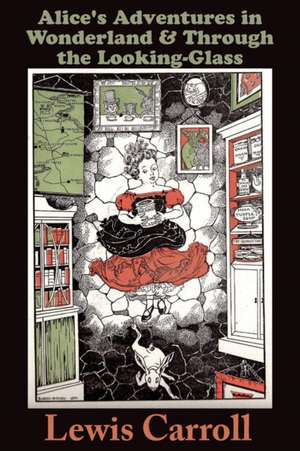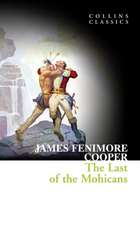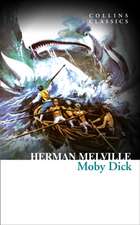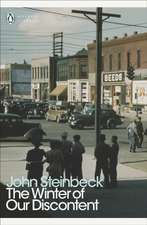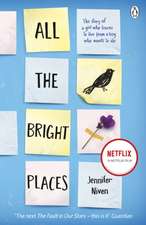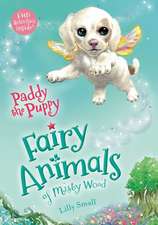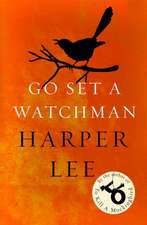Alice's Adventures in Wonderland
Autor Lewis Carrollen Limba Engleză Paperback – 22 ian 2019
- In chapter 1, "Down the Rabbit-Hole", in the midst of shrinking, Alice waxes philosophic concerning what final size she will end up as, perhaps "going out altogether, like a candle"; this pondering reflects the concept of a limit.
- In chapter 2, "The Pool of Tears", Alice tries to perform multiplication but produces some odd results: "Let me see: four times five is twelve, and four times six is thirteen, and four times seven is--oh dear! I shall never get to twenty at that rate!" This explores the representation of numbers using different bases and positional numeral systems: 4 5 = 12 in base 18 notation, 4 6 = 13 in base 21 notation, and 4 7 could be 14 in base 24 notation. Continuing this sequence, going up three bases each time, the result will continue to be less than 20 in the corresponding base notation. (After 4 12 = 19 in Base 39, the product would be 4 13 = 1A in Base 42, then 1B, 1C, 1D, and so on.)
- In chapter 7, "A Mad Tea-Party", the March Hare, the Hatter, and the Dormouse give several examples in which the semantic value of a sentence A is not the same value of the converse of A (for example, "Why, you might just as well say that 'I see what I eat' is the same thing as 'I eat what I see'!"); in logic and mathematics, this is discussing a converse relation.
- Also in chapter 7, Alice ponders what it means when the changing of seats around the circular table places them back at the beginning. This is an observation of addition on the ring of integers modulo N.
- The Cheshire cat fades until it disappears entirely, leaving only its wide grin, suspended in the air, leading Alice to marvel and note that she has seen a cat without a grin, but never a grin without a cat. Deep abstraction of concepts, such as non-Euclidean geometry, abstract algebra, and the beginnings of mathematical logic, was taking over mathematics at the time Dodgson was writing. Dodgson's delineation of the relationship between cat and grin can be taken to represent the very concept of mathematics and number itself. For example, instead of considering two or three apples, one may easily consider the concept of 'apple', upon which the concepts of 'two' and 'three' may seem to depend. A far more sophisticated jump is to consider the concepts of 'two' and 'three' by themselves, just like a grin, originally seemingly dependent on the cat, separated conceptually from its physical object.
Preț: 62.90 lei
Nou
12.04€ • 12.49$ • 10.06£
Carte tipărită la comandă
Livrare economică 17-31 martie
Specificații
ISBN-10: 1940849993
Pagini: 156
Dimensiuni: 152 x 229 x 9 mm
Greutate: 0.24 kg
Editura: Ancient Wisdom Publications
Notă biografică
Descriere
Go down the rabbit hole with Alice in this brand-new edition of Lewis Carroll's classic stories, Alice's Adventures in Wonderland and Through the Looking-Glass.
Produced in association with the UK's National Gallery, this handsome new hardback edition's dustjacket features artwork from the gallery's collection and includes expert notes on the art. The image is A Girl with a Kitten, probably by Jean-Baptiste Perroneau – an idealised portrait of a young girl with her pet which evokes Alice and her cat Dinah.
Featuring the full original text of both Alice's Adventures in Wonderland and Through the Looking-Glass, this striking edition is the ideal gift for anyone who loves the characters, wit and sublime silliness of Alice's adventures.
This volume is part of the new Masterpiece Classics series from Welbeck, which includes The Jungle Books.
Caracteristici noi
Cuprins
Caracteristici
Recenzii
Textul de pe ultima copertă
For over 125 years John Tenniel's superb illustrations for Alice's Adventures in Wonderland have been the perfect complement to Lewis Carroll's timeless story. In that time Alice has been illustrated by numerous artists, but not one has come close to matching the universal appeal of the original pictures.
This is the first Alice to reproduce Ternniel's exquisite drawings from prints taken directly from the original wood engravings. Here, Tenniel's fine line work is far crisper, delicate shadings are reproduced with more subtlety, and details never seen before are now visible.
Like most nineteenth-century children's books, the pictures for Alice were created by transferring the artist's drawings to woodblocks, But with Alice, the original blocks served as masters from which metal plates were made for printing. Unfortunately, these plates deteriorated from the repeated pressure applied during printing, and over time, many of the fine lines in Tenniel's pictures simply vanished altogether.As the year-, passed, the original woodblocks disappeared and were believed lost; then, in 1985 they were discovered in a London bank vault.
Now, for the first time, prints from these woodblocks have been used to produce a deluxe gift edition with clearer, more detailed images than have ever been seen before. At last, readers can see the Alice that Carroll and Tenniel had originally envisioned.
